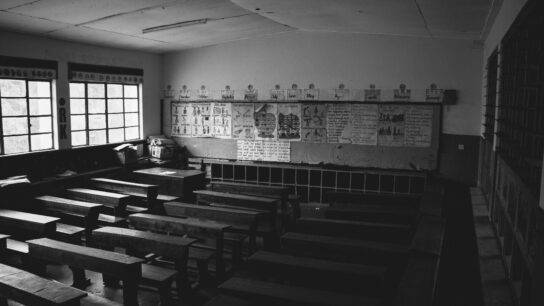Past, Present & Future
When the colonists began discussing the issue of education they were largely in agreement that their children should be educated. They proclaimed that the government, which was still in its formulation period, should be in some way responsible to see that every child be educated at least to a pre-determined level of proficiency in reading and numeracy. They did not however, say anything about schools. They were happy staying away from that subject (and I certainly do not blame them) rather they left that issue open to the times. What parents and local municipalities thought best for their own particular socio-economic environments, was certainly good enough for the founders.
Lest I bore you with too much history, I will fast forward to the somewhat recent past and lead into the present education model currently being used in the United States. Take away all the bells and whistles; education in the United States is by-in-large being delivered in the same fashion as it was in its very infancy. Students are put into groups according to their age (generally) and assigned to a classroom where twenty to thirty other children of the same age are lined up in rows and lectured to by one teacher. The one teacher, by the way, is often assigned at the elementary level (K-8) to teach multiple subjects during each daily session. This model is very reminiscent of an assembly line of workers doing the same repetitious action until told to stop either because they reached a specified number of widgets or they were instructed to retool for the next line of widgets. This model has led many prominent people to speak out. I quote one such person:
“Our K–12 system largely still adheres to the century-old, industrial-age factory model of education. A century ago, maybe it made sense to adopt seat-time requirements for graduation and pay teachers based on their educational credentials and seniority. Educators were right to fear the large class sizes that prevailed in many schools. But the factory model of education is the wrong model for the 21st century.”
Former US Secretary of Education Arne Duncan (2010).
Yes it is important to remember what you have learned, which by the way, is very different from memorizing what the teacher has said. Unfortunately, the latter is the common practice. Due to the “what has always been done” mentality and in large part because parents, teachers, school boards and the community at large are so focused on scoring well on each individual state’s standardized tests and how they might affect the funding and/or ratings of the school system, that they forget why they are educating the children in the first place. We educators, and yes I include myself, have been either wittingly or unwittingly bamboozled into “teaching the tests”. In other words designing our lesson plans around what the students will need to know to pass the tests. This practice has been to the detriment of the student as well as society at large. Memorizing what may or may not be on the mandated tests has not been proven to prepare students for college or their chosen careers. Just ask any community college advisor, they will say without hesitation, high school graduates are not fully prepared to enter college.
There are many reasons why this un-readiness is so prevalent today and has been steadily growing. However, for the purpose of this particular installment, we will focus on the fact that memorization, as we know it, as in the actor and their lines, will not help one build the knowledge and skills necessary to obtain and keep a high wage job, (unless of course you are an actor). The skills required for entrance into college and a career are deeply imbeded and have been built upon as one has journeyed through the educational process. Each bit of information layered onto prior bits and so forth and so on. The ability to reason and draw from that prior knowledge is in itself a learned skill. It is no secret that memorized information is usually lost if not used. The information that is memorized for the dreaded “test” is all but forgotten when the boss asked why the widget is broken. Unless they have had the opportunity to use and discover different types of widgets and actually apply what they are learning to the application of those widgets, those entering the workforce or college, will often be at a disadvantage.
So as we continue to explore the possibilities, as we journey through these posts, at some point (and I predict sooner than later) you will come to join my argument; that the modern classroom is not the most appropriate environment for acquiring those important cognitive skills necessary in the “real world”. Heaven forbid we might even consider using what today’s young people know best; computer programs, such as video games (ghastly!) as valuable adjuncts to traditional didactic instruction. Who knows? We should keep our own minds open as we explore a little further each week.
Even Walt Whitman predicted the insufficient American educational model back in the mid-nineteenth century.
“Shut not your doors to me proud libraries, / For that which was lacking on all your well-fill’d shelves, yet needed most, I bring…”
Leaves of Grass, Walt Whitman
In “Shut Not Your Doors,” Whitman cries out for the acceptance of his teachings. Whitman frames his work as the opposite of established institutional learning. This theory of pedagogy was instilled in him during several miserable years that Whitman spent as a teacher. Whitman saw established learning as a barrier to true intellectual enlightenment. In this poem, Whitman seems to be saying that he does not wish for all established knowledge to be thrown out, but only that the institutions of learning make room for the kinds of intellectual enlightenment that he brings. These institutions, which have become staid and uninspired, need the kind of prophecy which Whitman brings in his poetry. This is the history that fascinates me, proof positive that if we do not know it, or if we continue to ignore it, we will indeed be doomed to repeat it.
It is my fervent hope that we Americans can find the grit and will to change our own educational culture — one parent, student and teacher at a time






